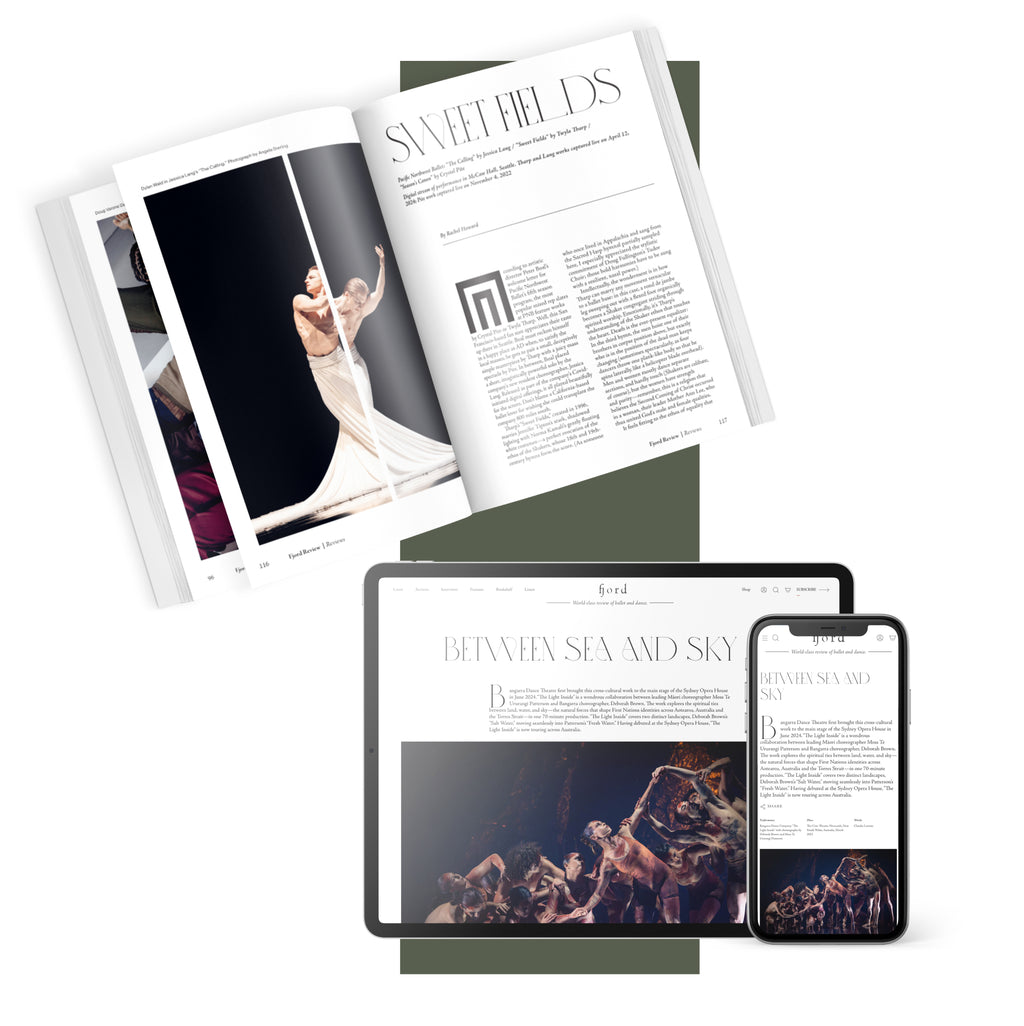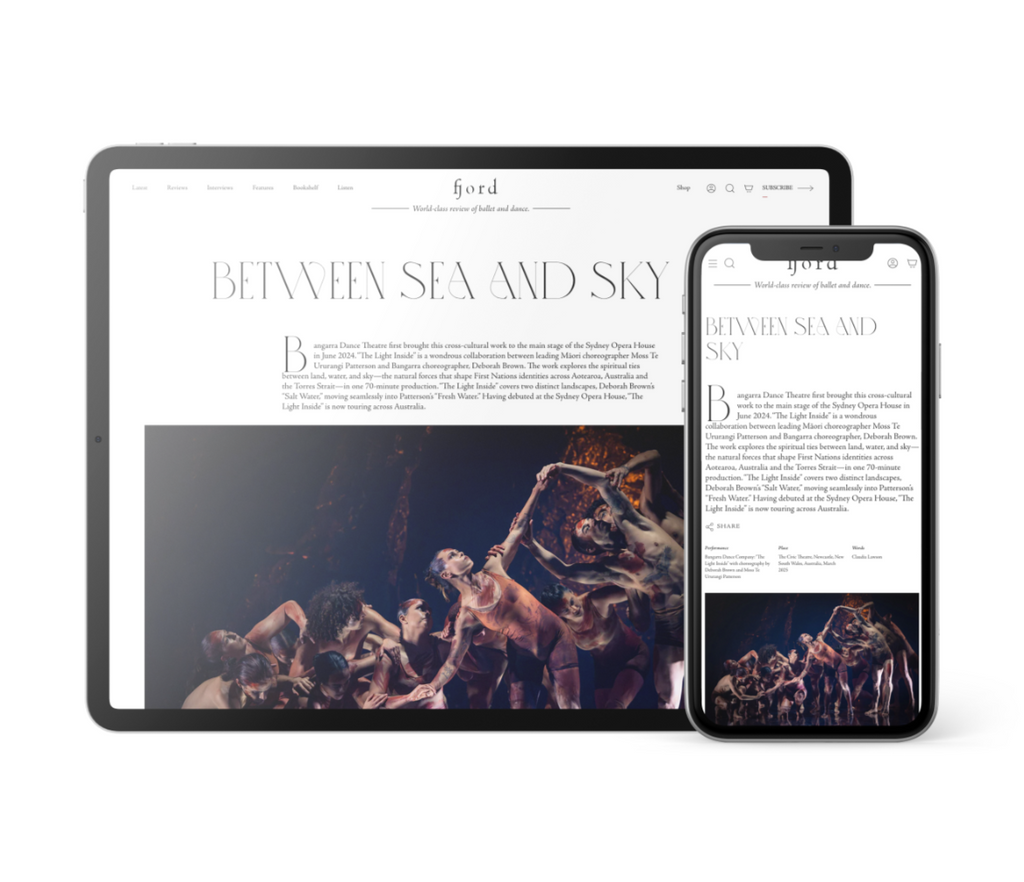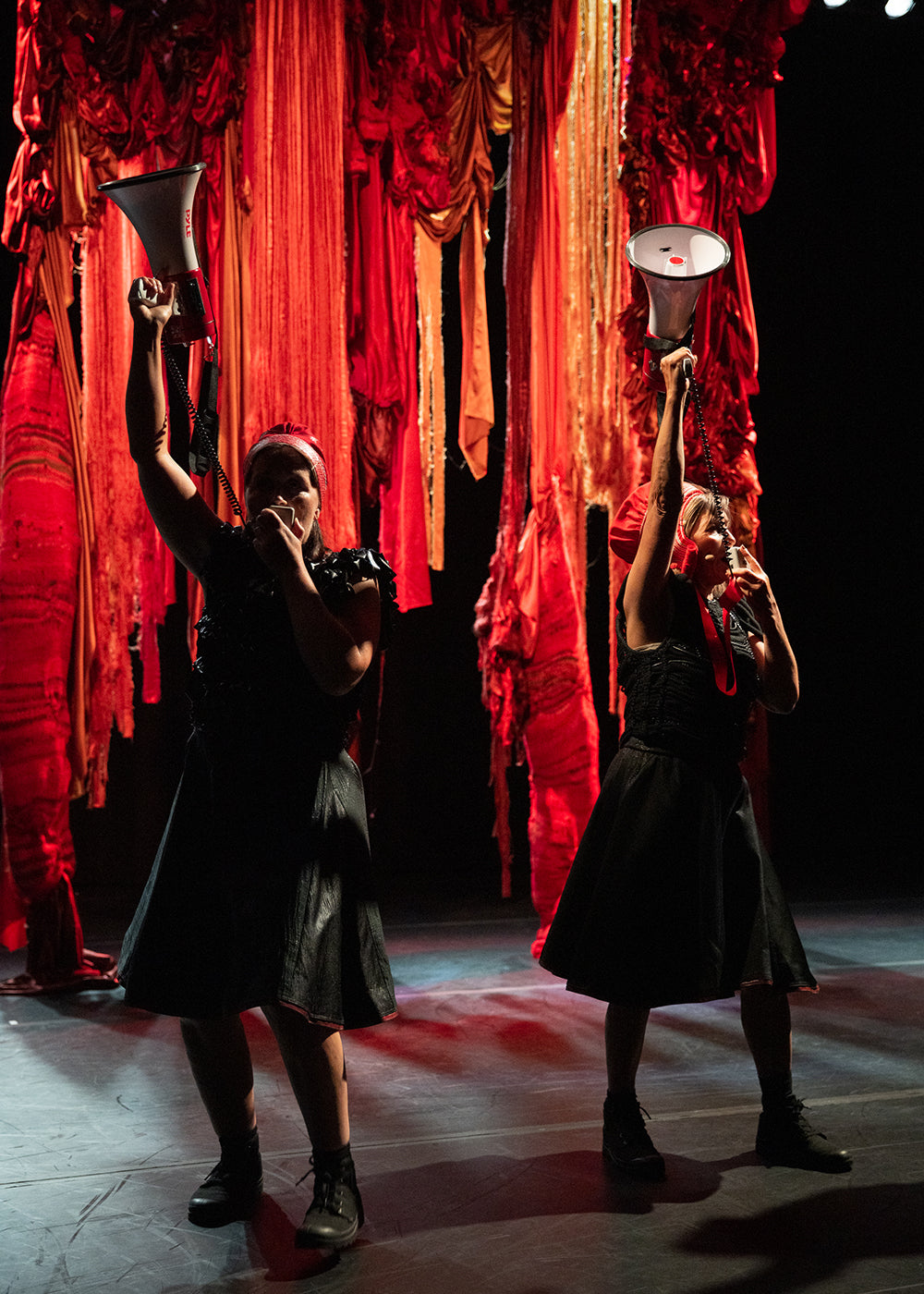Mishima’s Muse
Japan Society’s Yukio Mishima centennial series culminated with “Mishima’s Muse – Noh Theater,” which was actually three programs of traditional noh works that Japanese author Yukio Mishima adapted into modern plays.
Continue Reading
World-class review of ballet and dance.
Vástádus Eana—The Answer is Land” opens outdoors, where the audience has gathered around a grassy area. Seven women in black skirts, ankle boots, red capes, and bonnets approach toting megaphones above their heads. They march purposefully within the enclosure, then stop and lower the megaphones to the ground. One issues a mournful call and the others respond. Together they stretch their arms in an arc overhead, take a quick twirl. They sing, one hand holding the megaphone cap to the mouth, while balancing the bullhorn on a shoulder. Finishing in silence, they stand still for quite a long moment, then head to the Doris Duke Theater stage door, leading a procession of audience members.
Performance
Place
Words



“Uncommonly intelligent, substantial coverage.”
Your weekly source for world-class dance reviews, interviews, articles, and more.
Already a paid subscriber? Login

Japan Society’s Yukio Mishima centennial series culminated with “Mishima’s Muse – Noh Theater,” which was actually three programs of traditional noh works that Japanese author Yukio Mishima adapted into modern plays.
Continue ReadingThroughout the year, our critics attend hundreds of dance performances, whether onsite, outdoors, or on the proscenium stage, around the world.
Continue ReadingOn December 11th, the Alvin Ailey American Dance Theater presented two premieres and two dances that had premiered just a week prior.
Continue ReadingThe “Contrastes” evening is one of the Paris Opéra Ballet’s increasingly frequent ventures into non-classical choreographic territory.
Continue Reading
comments